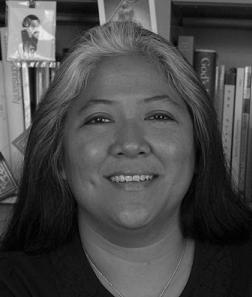| Engaged Pedagogy and Civic Engagement |
![PDF-NOTE: Internet Explorer Users, right click the PDF Icon and choose [save target as] if you are experiencing problems with clicking.](http://rsnonline.org/templates/rsntemplate-smallmasthead/images/pdf_button.png) |
 |
|
Page 1 of 3 Swasti Bhattacharyya, Buena Vista University
Civic Engagement Projects in the Religious Studies ClassroomAs an applied ethicist, I am concerned with both the content of what students learn and how they choose to apply, or not to apply, their knowledge. An overarching yet somewhat unassessable goal I have set for my students is for them to become actively engaged in the world in which they live: for them to be engaged citizens. Through a Wabash Center for Teaching and Learning in Theology and Religion grant project, entitled “Pedagogies for Civic Engagement,” I was given the opportunity to explore how a classroom context could encourage students to become more civically engaged. As part of my participation in this grant, I designed a “Civic Engagement Project” (CEP) for an environmental ethics class (PHIL 340).
In addition, individually each student was required to:
This CEP assignment was introduced at the beginning of the semester, when we had a brief discussion regarding the purpose behind the project and the general idea of civic engagement itself. Throughout the semester, students were encouraged to think of topics, types of projects they would like to create, and the groups they would like to form. During the tenth week of the semester, the students formed groups, selected specific topics and intended audiences, and began designing their projects. They utilized the course material and additional research to develop their presentations. The topics of the final CEPs included how to reduce one’s carbon footprint, the importance of trees and other vegetation, production and use of energy (with specific focus on coal mining), puppy mills, how nitrates and phosphates threaten wetlands and create dead zones (specifically in the Gulf of Mexico — this was, of course, before the current BP disaster), and sustainability. The CEPs themselves varied: panel discussions consisting of faculty and community experts, a signature drive on a letter to members of the Iowa State House and Senate, a tree planting event, presentations to various audiences — one group created a presentation for a local high school senior science class — and a meditation/trash pick-up event. Most of the student journal entries indicated that the CEP assignment made them aware of their responsibility and their ability to act on the issues important to them. A number of students expressed sentiments similar to the following: “The most important element I learned from this assignment was that making an impact in the community and educating others is not very hard... with all the problems in the world and the need for people to be educated, I would think that more groups would try to help the community and campus by doing a project like we did.” Through this assignment, the students had the opportunity to take a stand on an issue, to present it, and to see that, through their willingness to educate themselves and others, they can influence how people think and act. They saw how they could make their voice heard and that people actually listened. Their comments indicated that they recognized that they were learning about something important, they had an increased awareness of their own actions, and, for many, they gained perspectives that would serve them in the future, both in and out of the classroom. |


 Swasti Bhattacharyya is associate professor of religion at Buena Vista University. She teaches courses in various world religions, applied ethics, and nonviolence, peace, and justice. She has published in the International Journal of Gynecology and Obstetrics, contributed chapters to several books, and is the author of Magical Progeny, Modern Technology: A Hindu Bioethics of Assisted Reproductive Technology (State University of New York Press, 2006). Her current project focuses on the living legacy of Vinoba Bhave and sarvodaya. Bhattacharyya serves as cochair of the AAR Bioethics and Religion Group and as a member of the AAR Teaching and Learning Committee.
Swasti Bhattacharyya is associate professor of religion at Buena Vista University. She teaches courses in various world religions, applied ethics, and nonviolence, peace, and justice. She has published in the International Journal of Gynecology and Obstetrics, contributed chapters to several books, and is the author of Magical Progeny, Modern Technology: A Hindu Bioethics of Assisted Reproductive Technology (State University of New York Press, 2006). Her current project focuses on the living legacy of Vinoba Bhave and sarvodaya. Bhattacharyya serves as cochair of the AAR Bioethics and Religion Group and as a member of the AAR Teaching and Learning Committee.